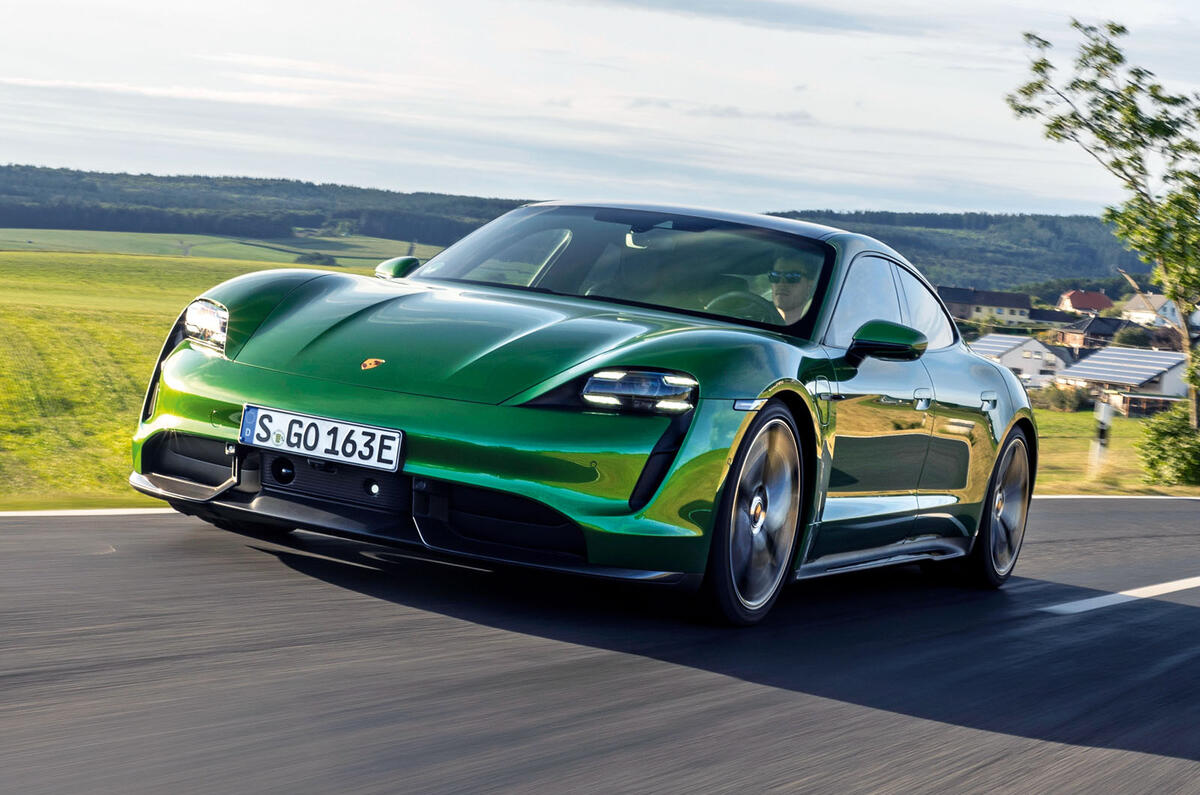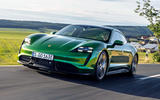What is it?
I think this handsome thing is the world’s best electric car. I suppose it should be, because the new Porsche Taycan, in toppermost Porsche Taycan Turbo S form, costs £138,826 before options – and you’ll need to specify some of those, as we’ll come to.
First, though: this electric car/Turbo combo. There’s something not quite right there, wouldn’t you say? Although Supercharger and Autopilot don’t seem to mean what I thought, either. Look, we all know Turbo is a sub-brand, not a literal thing, says Porsche. It means souped up, which is why there are Turbo versions of vacuum cleaners or already turbocharged Porsche 911s.
Figuratively, Turbo means chuffing powerful. The Taycan Turbo S figuratively and literally is that. It has 751bhp, albeit on overboost, for a few seconds, during launches, when it can hit 60mph from rest in 2.6sec. Even the regular Porsche Taycan Turbo (merely £115,828) has 670bhp in the same mode. Both, strangely, make 617bhp when you’re not launching.
Cheaper, less powerful, non-Turbo Taycans will follow, but when early adopters with heavy wallets are waiting, why offer those now?
This expensive market entry, then, is Porsche’s first pure EV, but the company has form with electricity via its hybrids, plugged in or otherwise, in road cars and motorsport. The Le Mans-winning 919 has been running an 800V electrical system since 2011 and the Porsche Panamera Turbo S E-Hybrid is the kind of car we use on a drag race video when we want to give a Tesla Model S’s Ludicrous Mode a hard time.
The Taycan will be able to fill that brief without the Panamera’s internally combusted element. It’s a five-door hatchback, marginally smaller than a Panamera, built on a new platform, with a raft of lithium ion batteries beneath the floor. They total 93.4kWh, good enough for a WLTP range of up to 280 miles in the Turbo (which has an exceptional drag coefficient of 0.22) or 256 miles in the Turbo S (Cd 0.25).
There are two motors – one front, one aft – powering all four wheels. The rear motor has a two-speed transmission, although it drives around mostly in second gear, with the low ratio reserved for the sportier of its drive modes at lower speeds. The Turbo S gets active rear steer, carbon-ceramic brakes, a different inverter to allow the overboost and bigger wheels as standard, but generally the differences over the Turbo are limited.
All Taycans will come with a close-to 800V electrical system, twice the norm for EVs. Porsche says that by doubling the voltage, it can halve the current running through its cables (Ohm’s law, I think), allowing them to be thinner and their turning radii therefore smaller, so Porsche can thread them where it wants and save 40kg over a 400V system.
They can all charge from an 800V charger, if you can find one, at up to 270kW – taking it from 5% to 80% juice in a little over 20 minutes. There was talk, originally, of 350kW charge capacity, but Porsche says 350kW referred to partner Ionity’s charger outputs, not the car’s ability to take it: that was always meant to be 250kW-plus. Looking through Porsche’s newsroom back issues, this rings true, but there’s enough 350kW talk for it to have been inferred.
On more common 400V chargers, the Taycan will charge at just 50kW as standard, with 150kW capacity only as a £294 option. Porsche isn’t the only car maker to start offering better charge capacities as options and it’s not a great look. Optional ‘up to’ rates could become the auto industry’s equivalent of overstated broadband speeds. It’ll confuse and justifiably annoy people who haven’t yet forgotten the diesel scandal. Just fit what conscience says you really should, and be consistent about it.












































Join the debate
Add your comment
"shows the rest of the world how it should be done"
So normal service at Porsche then?
Future is looking good
Handsome thing and sounds like it’s really excellent , cost excepted. Slightly cheaper than a Panamera Turbo S though which implies the vanilla version should start around £70k.
and yet they left out the Tesla's range
Besides building a good car itself- which is a mimimum requirement, the most important aspect of any electric car is its range.
Did Autocar test the actual range of this car, no.
Did Autocar mention that the likely real range of the best of these Porsches is around 230 miles, which is very limited (and possibly unusable) for long disatnce driving, no.
Did Autocar even bother to mention that upspec Tesla S's get 90 more miles of range, no.
Is this report biased, imho yes.
Tesla time!
J14069@, you actually own a Tesla?, if you do, you'll know it's good and bad points, you don't know what the Porsche will do, if it's been tested on the new emissions test I'd believe the figure,where this car scores is handling, I've read two articles on the car and both say it's really good for a 2.3 ton car, Tesla as yet have got a sport car on sale, so, to an extent they're not compatible.....